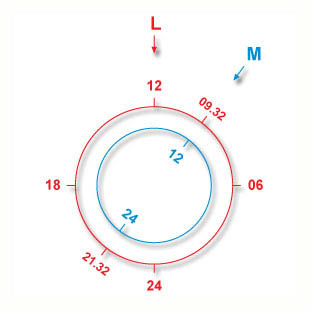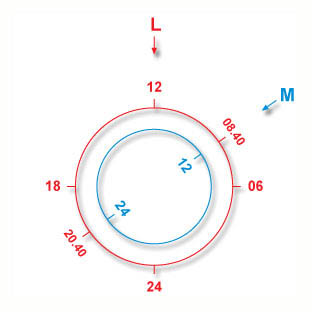The anomalies in the times of the tides would occur when the protection of the magnetosphere gets weaker. During such circumstances, the local magnetic meridian position would be affected, by conforming with the angle of incidence of the solar wind, when crossing the Earth.
If the speed of the solar wind increases.
As the solar wind speed increases, its angle of incidence (M) would tend to get closer to the sunlight beam (L), the base reference for our clocks. Then, the time of incidence of the magnetic meridian (M) would get closer to the time of incidence of the common meridian (L), which remains fixed.
In the north hemisphere.

In other terms, (M) gets late. As well as the times of the water figures and tide generation. As the speed of the solar wind increases, the tides delay.
Provided that these conditions are maintained during enough hours, with respect to the delay between the tide generation times (density decrease of the water) and the arrival of the tidal wave near the coast, we will see a tide coming late.
When the solar wind gets slow.

Conversely, when that angle gets wider, all phenomena regulated on the magnetic meridian would tend to be early (on our clocks).
In other words.
Following a non-transient interaction of the Earth magnetism, with that associated to the solar wind, the tides would show a trend to be in advance, when the solar wind is reduced; a trend to be late, with a high speed solar wind.
The perturbation of end october 2003.
In the issue 9.8, 2003-12-22, I have publised the data of a case of a substantial change of the tide times, possibly caused by a solar perturbation, occured at the end of October 2003.
More examples.
Until now, 2012-06-29, I have not recorded other examples of this kind.